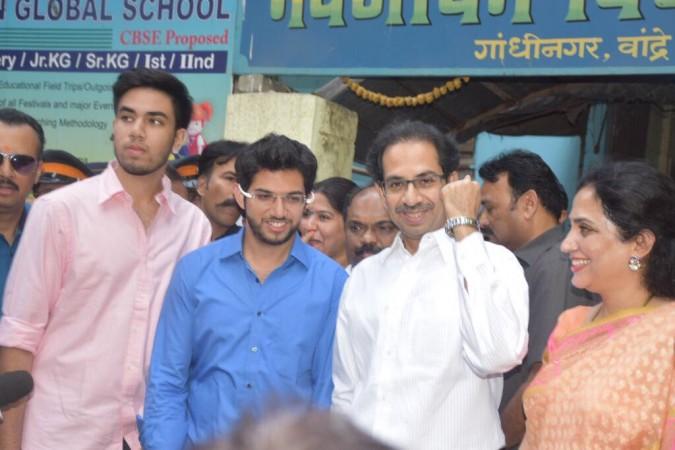
The residents of Mumbai have created a record of sorts with their turnout for the Brihanmumbai Municipal Corporation (BMC) elections, which was held on Tuesday to elect councillors to 227 seats in India's richest civic body. However, the 55 percent voter turnout — for which Maharashtra Chief Minister Devendra Fadnavis congratulated Mumbaikars — could well be a body blow for the Bharatiya Janata Party, to which Fadnavis belongs.
Also read: BMC elections 2017: 4 reasons why Varun Dhawan and a few others could not vote in the civic polls
Mumbai has not seen voter turnout of 50 percent on an average for years now, and that includes the state and Lok Sabha elections that came soon after the 26/11 terror attacks and the subsequent backlash against then chief minister Vilasrao Deshmukh who had taken along filmmaker Ram Gopal Verma while inspecting the damage to the Taj Hotel after the attacks.
Therefore, the 55 percent voter turnout is surprising on the surface, but not entirely unexpected when one explores the depths of Mumbai's political scenario. Let's take a look at five reasons why Mumbai turned out in greater numbers for the BJP, and why it could be the result of backlash towards the BJP:
1. Coastal Freeway: There is a big divide between eastern and western Mumbai, the latter being posh and the former, not so much. And western Mumbai loves its sea view. Thus, when the proposal came up to build a Coastal Freeway — a freeway being the American term for a highway — came up, Western Mumbai wasn't exactly thrilled. After all, it would spoil their sea view. And although the proposal is the result of a process started by a previous regime, the BJP might have to bear the brunt for going ahead with it.
2. Shivaji statue: This is another point of contention between eastern and western Mumbai. While people in the east see this proposed statue as a matter of pride, those in the west see it as a waste of money that could have been better spent on infrastructure by the BJP government that is in power in the state. This, too, could come back to haunt the BJP.
3. Hardik Patel: In another move that could counter the BJP, old ally Shiv Sena is looking to break up, and one sign of it was the regional right-wing party calling upon Patidar Anamad Andolan Samiti chief and Patel quota agitation leader Hardik Patel to campaign in Mumbai and woo Gujaratis who have settled there. Patel is a known baiter of Prime Minister Narendra Modi, and his campaigning in Mumbai could result in a headache for the local BJP leaders.
4. Shiv Sena re-emergence: The Shiv Sena is currently being led by Uddhav Thackeray, and this was its first BMC election sans founder Bal Thackeray. In effect, this is a re-emergence of the Sena for the 'Marathi manoos,' and given the level of faith the local Marathi has on the political party, it can be assumed that they wanted it to win in the BMC polls — again — and hence there were greater numbers.
5. Demonetisation and crackdown on black money: Mumbai is considered the financial capital of India, and where there is money, there is black money. Modi's demonetisation move — aimed at cracking down on black money — affected a lot of businessmen, and more so if they had black money. One result of this was long queues outside gold and jewellery shops in Mumbai late on November 8. Those affected by this move could have taken this election as an opportunity to make their pain known to the BJP.















